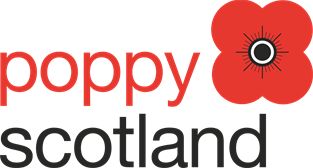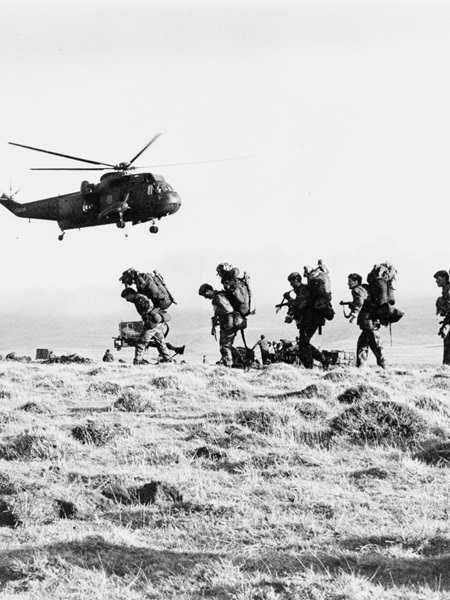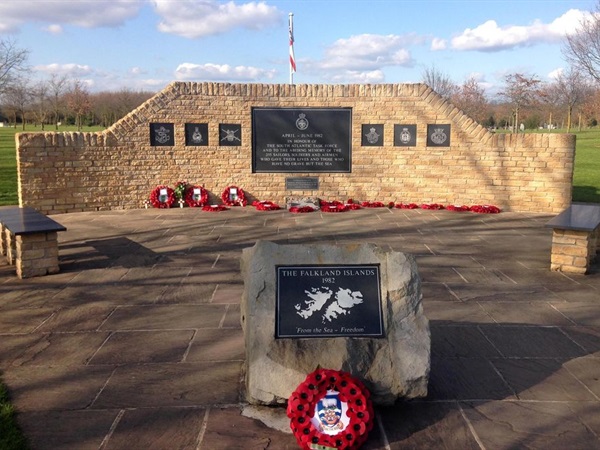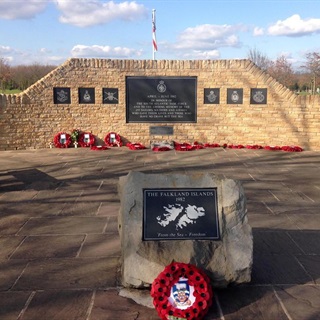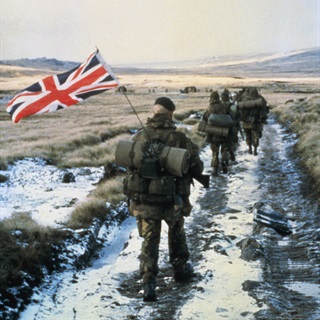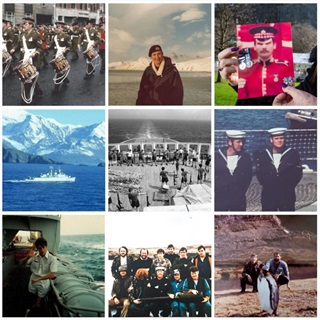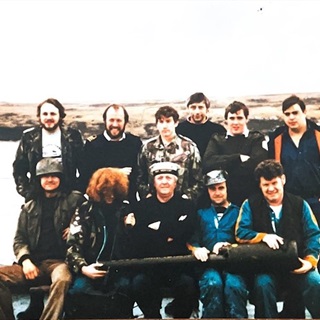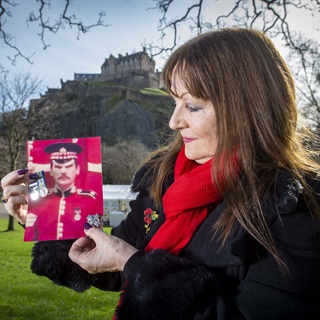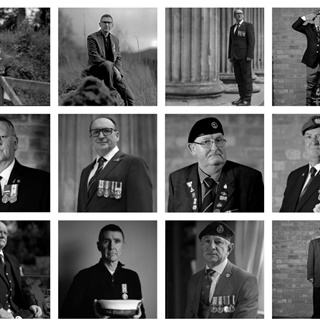This year marks the 40th anniversary of the Falklands War. The conflict began on the 2nd of April 1982, when Argentina invaded the Falkland Islands, a British overseas territory in the south-west Atlantic Ocean.
255 British servicemen, 649 Argentine military personnel and three civilians died, and many more were wounded. It marked the first military action since the Second World War that utilised all elements of the Armed Forces.
Although widely known as the Falklands War, war was never declared by either side. The first recorded landing at the Falklands was by British Captain John Strong in 1690. The archipelago became a Crown Territory in 1841, but Argentina has long claimed sovereignty over the islands. A military junta had been in control of Argentina since 1976 and following the appointment of General Leopoldo Galtieri as President in December 1981, plans to take the Falklands by force were drawn up in the belief that the United Kingdom would not respond militarily.
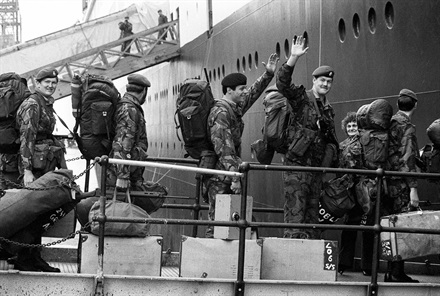
April 1982
On the 2nd of April 1982, Argentine forces landed on the Falklands and seized control of its capital, Port Stanley. A brave defence was mounted by 68 Royal Marines stationed on the Islands and 23 members of the Falkland Island Defence Force, but they were quickly outnumbered. The following day the nearby island South Georgia was also captured by Argentine forces.
Britain dispatched a naval Task Force on the 5th April and by mid-April had established RAF Ascension Island airbase in the mid-Atlantic as a staging point. The Merchant Navy also played a crucial role in transporting British personnel the 8,000 miles to the South Atlantic, a journey that would take several weeks.
On 21st April troops from the SAS and SBS landed on South Georgia and four days the Island was recaptured. Attention then turned to the Falkland Islands themselves.
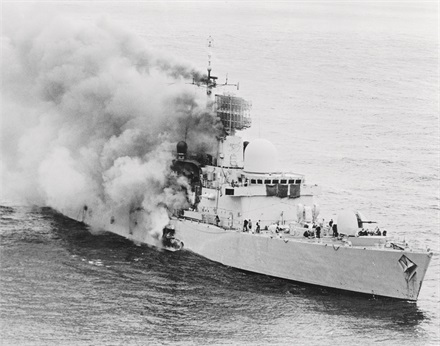
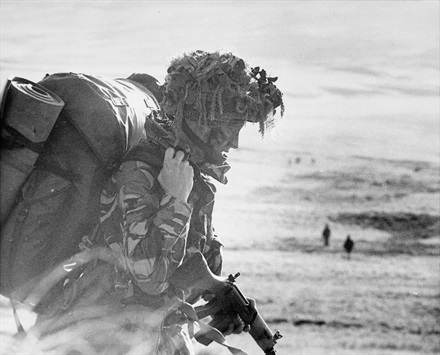
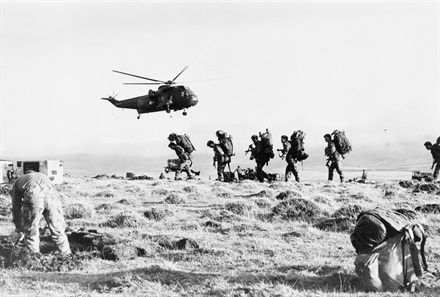
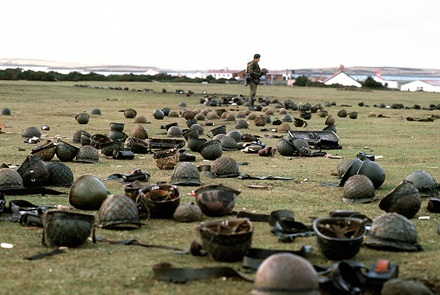
May 1982
The air and sea battle intensified over the following weeks as the British Task Force neared the Falklands. This period saw the sinking of HMS Sheffield, the first British warship to be sunk since the Second World War. The Sheffield was the first of 6 Royal Navy vessels and one landing craft to be lost during the conflict. 34 British aircraft were lost as well.
On the night of the 21st of May, the British Amphibious Task Group, comprising of 4,000 personnel, landed on the beaches around at San Carlos Water to the North West of East Falkland Island. By dawn the next day they had secured the beachhead and the recapture had begun. 2 Para marched to Darwin and Goose Green where, supported by RAF Harrier aircraft and naval gunfire from HMS Arrow, they were overcame a sizable Argentine force.
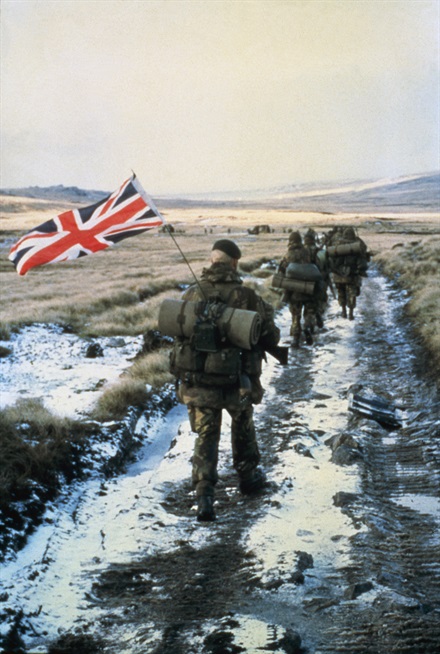

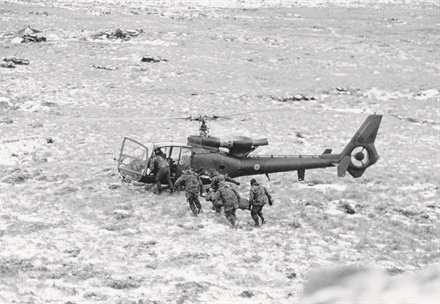
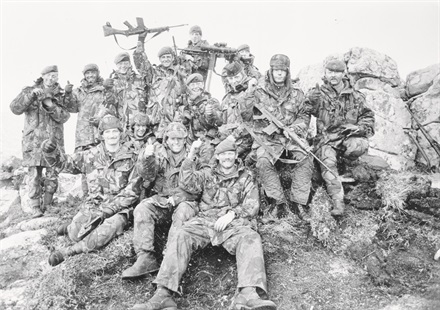

June 1982
By the 1st of June a further 5,000 British troops had landed and the offensive to retake Stanley began. After several days of painstaking reconnaissance and logistic build-up, British forces launched a brigade-sized night attack against the heavily defended ring of high ground surrounding Stanley on the 11th June. Thousands of British troops were engaged in fierce, close-quarters fighting to capture the hilly terrain around the capital. Scores lost their lives in the Battles of Mount Harriet, Two Sisters, Mount Longdon and Mount Tumbledown, the latter taken by the 2nd Battalion Scots Guards on the night of June 13th.
With the last natural defence line at Mount Tumbledown breached, British forces pressed on to Stanley where they met little resistance from the despondent Argentines. At 2100 hours on the 14th of June the commander of the Argentine garrison in Stanley, General Mario Menéndez, surrendered and a ceasefire was declared.

